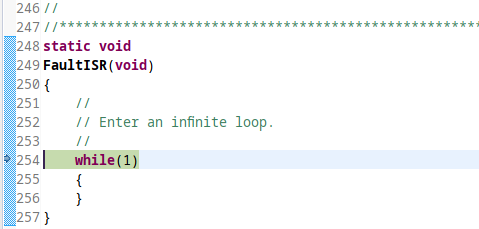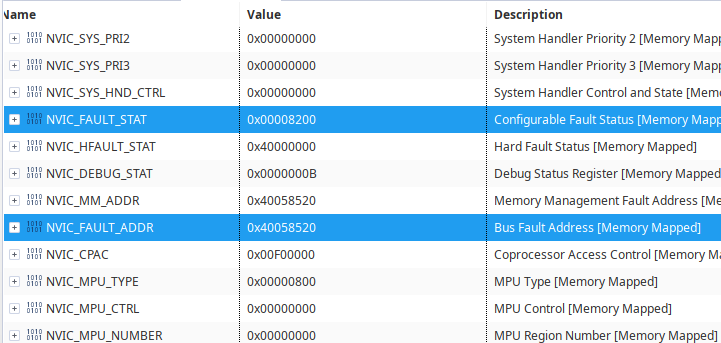Other Parts Discussed in Thread: EK-TM4C1294XL
Dear TI community,
Yesterday I received my EK-TM4C1294XL. I downloaded the Code Composer Studio v8.
I wrote a simple program that is supposed to lit a LED connected to PORTA RA4, but failed.
I used the debugger and I concluded that after every call
to a memory location defined by the preprocessor the program jumps to static void FaultISR(void).
#define GPIO_PORTA_LOCK_R (*((volatile unsigned long *) 0x40058520))
#define GPIO_PORTA_COM_R (*((volatile unsigned long *) 0x40058524))
#define GPIO_PORTA_DIR_R (*((volatile unsigned long *) 0x40058400))
#define GPIO_PORTA_DATA_R (*((volatile unsigned long *) 0x40058000))
int main(void)
{
GPIO_PORTA_LOCK_R |= 0x4C4F434B; /* Set write access for commit register */
GPIO_PORTA_COM_R |= 255; /* GPIOAFSEL, GPIOPUR, GPIOPDR and GPIODEN
bits can be written */
while(1) {}
return 0;
}
As seen in the above image, when running the debugger the first line that will be executed is line 9 in Code Composer Studio v8.
When I hit the Step Into (F5) button, the program jumps to the FaultISR as seen in the image under here.
I have my memory addresses from the datasheet so I asume they are correct.
Is there anything I am missing why I get the FaultISR if I write to a memory location that is in relationship to GPIO?
With kind regards,
Youri.




